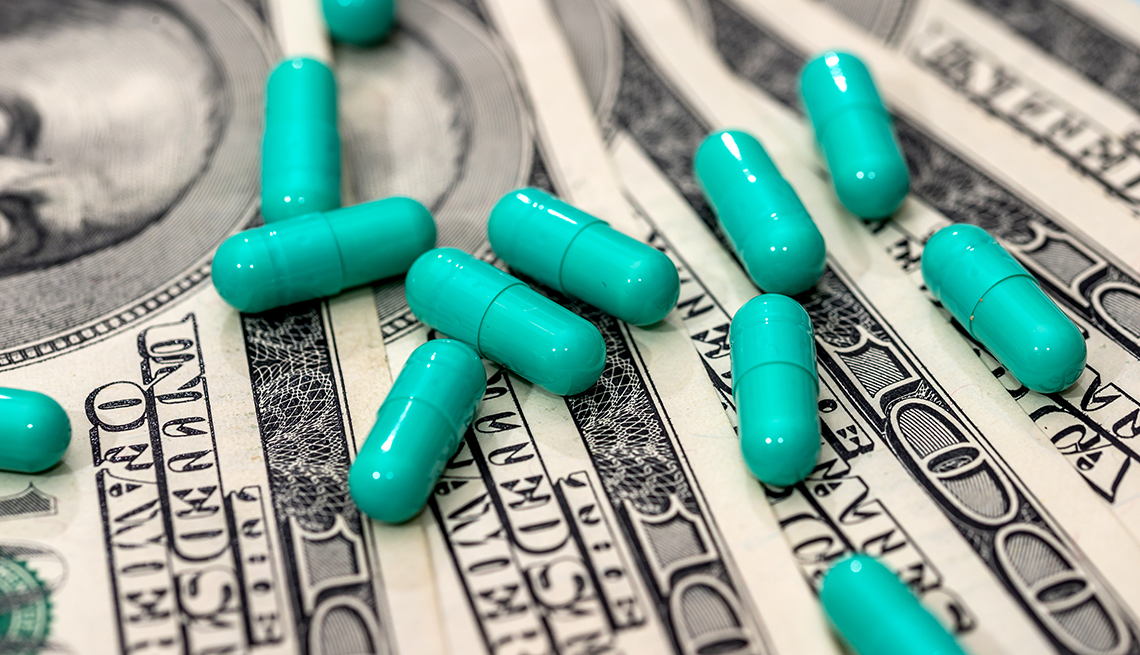Soaring Drug Prices Affect Nearly Every American
Lawmakers at every level need to address this problem
En español | The out-of-control prices that the pharmaceutical industry charges for prescription drugs is a crisis touching nearly every American.
A new report by the AARP Public Policy Institute (PPI) has found that retail prices for a set of 754 widely used drugs increased faster than inflation every year from 2006 to 2017. And in 2017 the average annual increase in drug prices was 4.2 percent, which was double the rate of inflation.
Soaring drug prices can be hidden from those for whom health insurance covers all but a copay. But the costs have a major impact on the health care system and ultimately affect everyone by driving up health premiums and spending on taxpayer-funded programs like Medicare.
So it’s worth putting rising drug prices in perspective. The average annual retail cost of drug therapy for a prescription drug in 2017 was almost $20,000 per year. Paying for one prescription drug completely out of pocket would cost more than the average person’s yearly Social Security retirement benefit that year, $16,848. It would also cost more than three-quarters of the annual median income for Medicare beneficiaries of $26,200.
States across the nation are leading the way in the fight to lower prescription drug prices. To date, 33 states have enacted new laws aimed at lowering the price of prescription drugs.
Lawmakers at the state level are employing a variety of innovative methods to lower prices, such as allowing safe importation of less expensive drugs from Canada and elsewhere, drug-price transparency and volume purchasing.
Something else stands out about the efforts of state lawmakers: The fight to lower prescription drug prices is uniquely bipartisan. It is happening in red states and blue states, in states with primarily rural and semirural populations, and in states that contain some of the nation’s largest cities. This is an issue people everywhere — of all political and cultural beliefs — can get behind.
And momentum is building. In August the Trump administration unveiled a plan to allow drug importation from Canada.
While we applaud and support the efforts of the states to lower drug prices, more aggressive federal action is equally essential. We believe that Medicare should be able to negotiate prices with prescription drug companies. But for now, drug companies raise prices at a rapid rate.
A PPI analysis found that Medicare spent an extra $110 billion in recent years because drug prices increased faster than inflation. To put this in perspective, that $110 billion is equivalent to paying for:
- A year of rent for 9 million U.S. families.
- A year of college for 9 million American students.
- A year’s worth of groceries for 25 million American families.
Medicare beneficiaries and taxpayers are footing the bill for unjustifiable drug price increases. And we’re all tired of it.
The drug companies argue that they need this money for research and innovation. Surely, we can find a way to strike a balance between continuing the very valuable research pharmaceutical firms are engaging in and the high price consumers pay for prescription drugs. We need the drugs the pharmaceutical industry develops, but we also need them to be affordable.
While the battles rage on in the states, let’s call on federal lawmakers to take real action to lower prescription drug prices nationwide.


